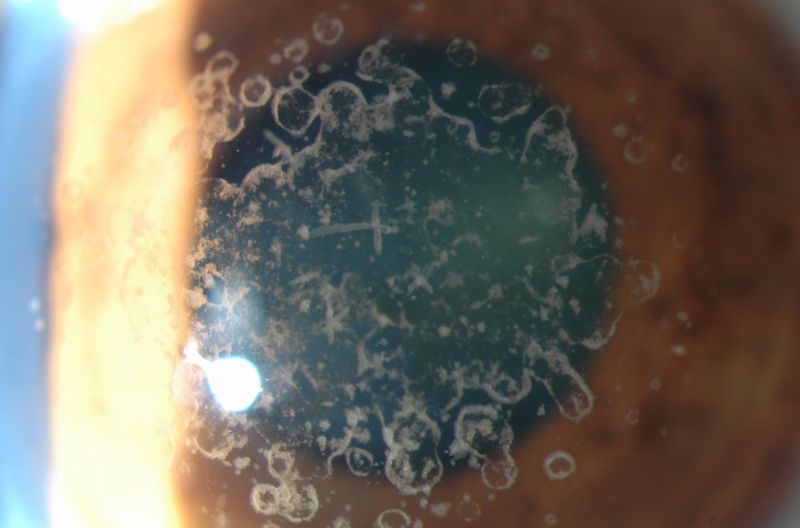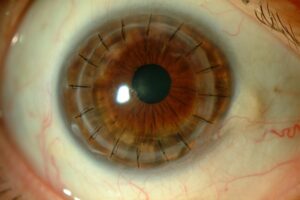Eye diseases
Corneal dystrophy

What is corneal dystrophy?
Corneal dystrophies are a group of corneal diseases considered rare or minority, and that are often genetic. There are many different types that are generally characterised by affecting both eyes and causing a loss of transparency in the cornea, the eye’s “window”. This gradually turns opaque due to the accumulation of foreign material (fluid, deposits, etc.) on one or several of the layers forming it, thus altering its structure and normal function.
Depending on the location of the dystrophy, the following can be told apart:
- Epithelial dystrophies: these affect the outer layer covering the cornea. They are the most frequent, although often go unnoticed without symptoms (usually recurrent episodes of eye pain).
- Stromal dystrophies: these are in the intermediate and thickest layer of the cornea, which accounts for 90% of its total thickness. They are less frequent.
Endothelial dystrophies: these damage the innermost layer of the cornea, resulting in it “misting” due to accumulated fluid, with the consequent loss of vision. The most frequent is Fuchs’ dystrophy, one of the most frequent causes of corneal transplantation at present in the western world.
Symptoms
Causes and risk factors
Treatment
Because they are genetic, corneal dystrophies are present from birth, but can also begin to appear at extremely wide-ranging ages: from childhood to adulthood (40-50) or old age (70-80, as with Fuchs’ dystrophy). If they appear in small children they might cause lazy eye.
The most characteristic symptom is blurred vision or, more directly, the gradual loss of vision. Some of these dystrophies might be associated to recurrent corneal erosions, as well as photofobia and the feeling of gritty eyes or a foreign body in the eye.


